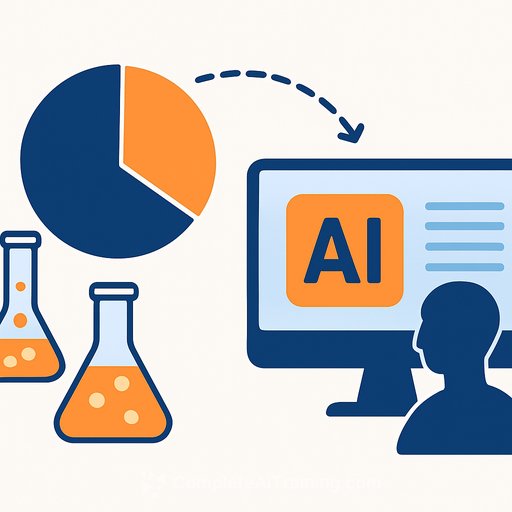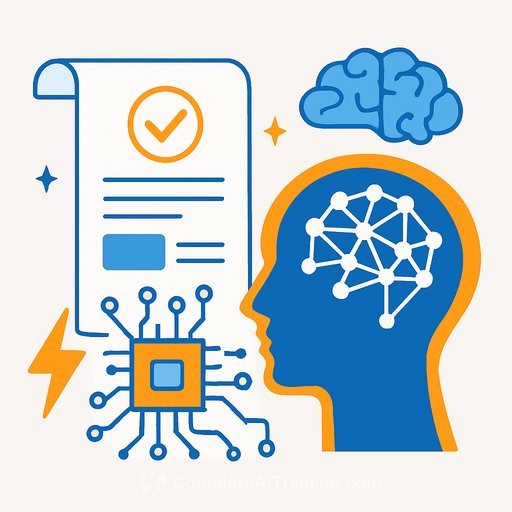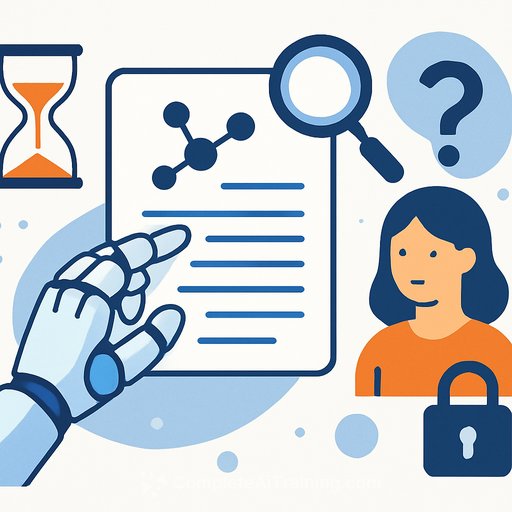Most Lab Data Stays Hidden. AI Can Make It Usable
A headline making the rounds claims that 80% of laboratory data never gets shared. Whether the exact figure is higher or lower, the signal is clear: critical datasets remain stuck in notebooks, PDFs, and local drives.
If your work depends on reproducibility, collaboration, and funding compliance, this is an execution problem, not a philosophical one. The fix is process, standards, and the right assistive tooling.
What keeps data from being shared
- Fragmented formats: spreadsheets, images, scripts, and instruments all output differently.
- Weak metadata: missing context (protocols, versions, conditions) makes reuse risky.
- Sensitive information: PHI/IP concerns stall releases or force manual redaction.
- Time pressure: curation happens last, under deadline, or not at all.
- Repository ambiguity: uncertainty about where and how to deposit specific data types.
What an effective AI curation tool should do
- Auto-extract metadata from lab notebooks, figures, code, and instrument files.
- Normalize units, map variables to ontologies, and flag ambiguity for review.
- Convert data to tidy, machine-readable formats with versioned schemas.
- Suggest repositories and licenses based on domain and funder requirements.
- Detect sensitive fields, propose redactions, and generate data use agreements.
- Package datasets with README, methods, provenance, and citation files (e.g., DataCite JSON).
Adopt standards that make sharing straightforward
- FAIR principles: make data Findable, Accessible, Interoperable, Reusable. See the overview at GO FAIR.
- NIH 2023 policy: if you're NIH-funded, a Data Management and Sharing Plan is required. Details at NIH Sharing.
- Persistent IDs: DOIs for datasets (DataCite), ORCID for researchers, RRIDs for reagents.
- Ontologies: use OBO Foundry vocabularies for variables, species, tissues, assays.
A minimal viable data-sharing workflow
- Plan: write a one-page data plan at project start: formats, repos, embargo, roles.
- Template: set a dataset skeleton (folder structure, README, schema, licenses).
- Ingest: drop raw and processed files; log scripts, environments, and parameters.
- AI assist: auto-label variables, units, instruments; suggest ontology mappings.
- Human review: resolve flagged fields; confirm units, protocols, and QC notes.
- Privacy/IP pass: detect and redact sensitive fields; attach usage terms.
- Publish: deposit to the target repository; mint DOI; link code and protocol.
Clinical and sensitive data
Use de-identification pipelines that handle direct and quasi-identifiers, and document risk thresholds. Prefer tiered access: a public metadata record, with controlled access to sensitive files.
Maintain a data use log and require ORCID-linked requests. Your AI tool should generate consistent data use agreements and track approvals.
What to measure
- Time from experiment completion to dataset publication.
- Percentage of projects with deposited datasets and DOIs.
- Reuse indicators: downloads, citations, forks of associated code.
- Interoperability: successful validation against your schema and ontology checks.
Quick wins this quarter
- Adopt a lab-wide README and dataset folder template.
- Standardize on two formats per data type (e.g., CSV + Parquet; TIFF + OME-TIFF).
- Automate unit normalization and metadata extraction at ingest.
- Pick one repository per data class and document deposit steps.
What to look for when evaluating AI tools
- Transparent logs for every transformation and suggestion.
- Configurable ontologies and schema validators.
- Local or VPC deployment options for compliance.
- Versioning for data, code, and environments; easy rollback.
- Exportable artifacts: README, methods, license, DataCite, and JSON-LD.
The signal is simple: if sharing feels painful, it will not happen. Make the path of least resistance the default, and let AI handle the repetitive work while your team validates the science.
Upskill your team
If you need structured training on AI-assisted data curation and analysis, see curated programs at Complete AI Training.
Your membership also unlocks:






